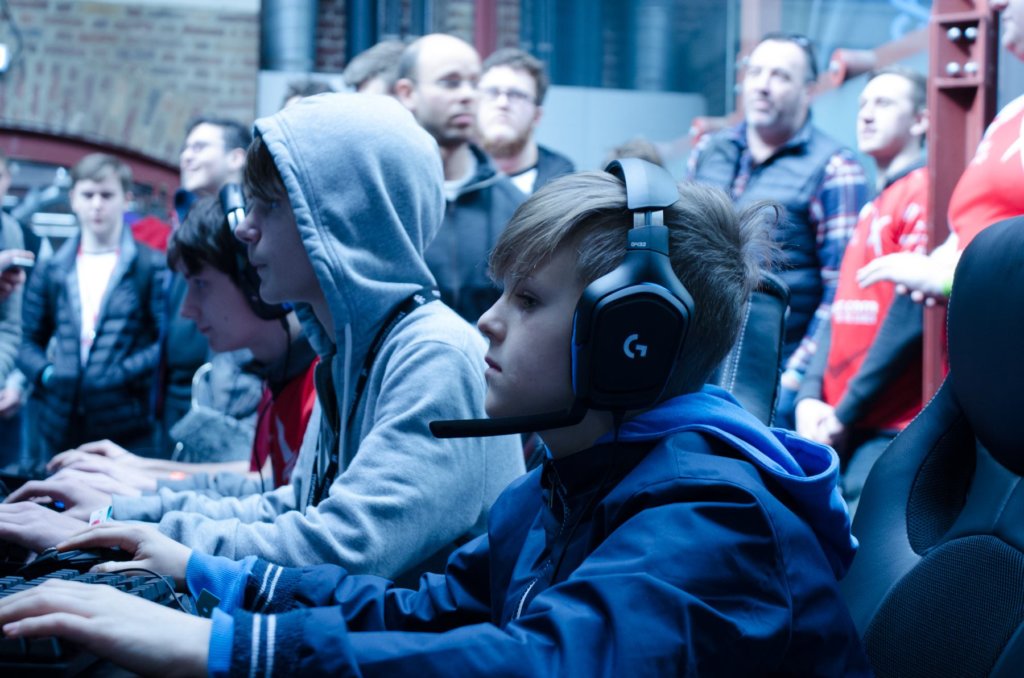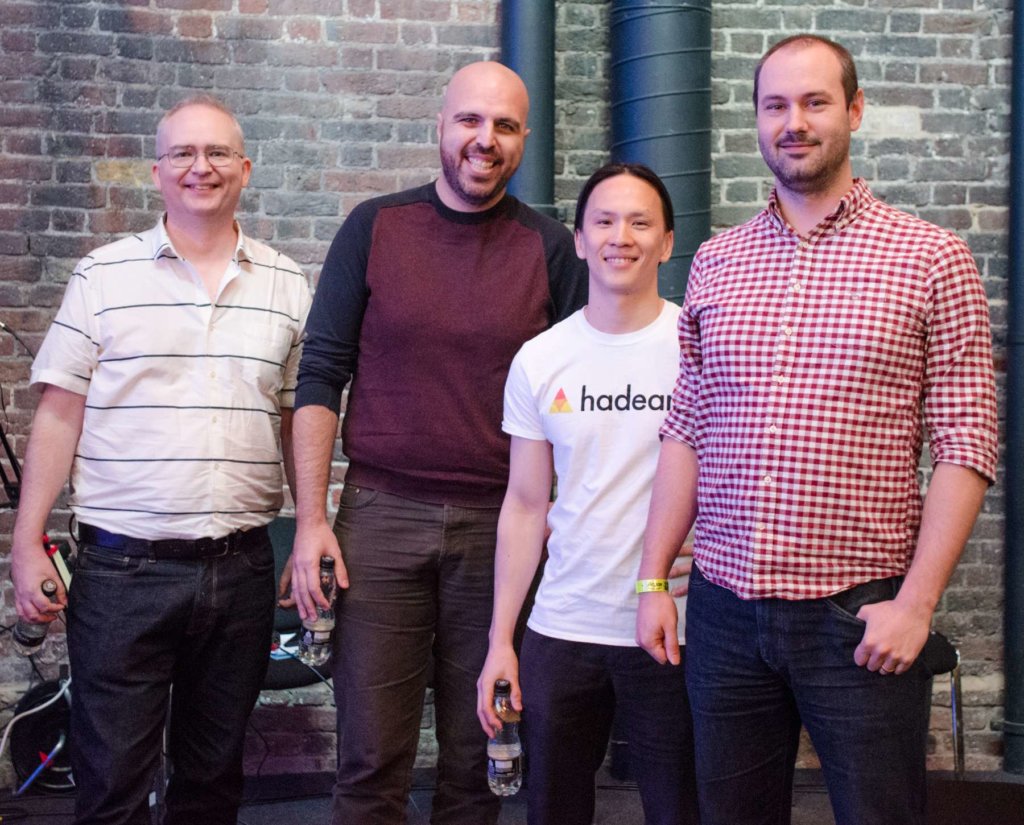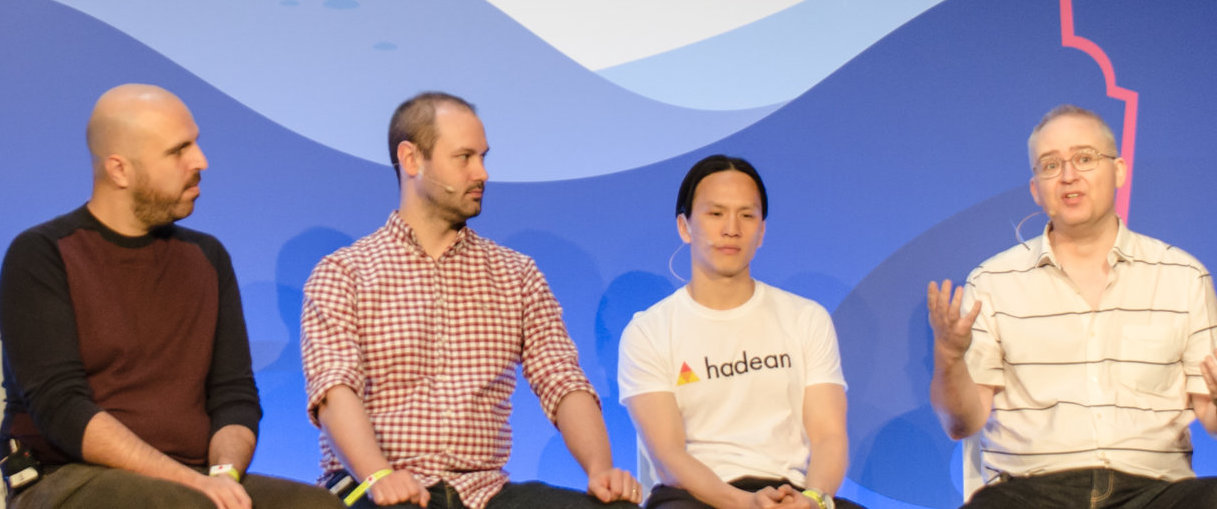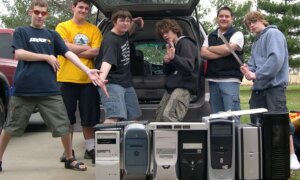Some of you might remember that Hadean created a simulation engine called Aether, which allowed thousands of gamers to participate in the same battle royale fight simultaneously. In their effort to make it happen, the British startup joined forces with CCP Games and planned an online fight that would involve 10,000 players.
Initially, the company posted a demo of how the battle would look like on YouTube, with some of the footage rendered, to give the people a taste of what the future dogfight might look like.
Keeping in mind that CCP Games, at the time, was holding the record for the largest players in a single battle -6,142- for EVE Online, it was a task to behold.
Hadean took to GDC 2019 to push the Aether Engine to the limits and to the limits it did – 3,852 players joined by AI connected clients made their presence known, with a total of 14,274 ships joining the battle in the virtual deep space.
It was a massive achievement and we had the chance to hear more about it during the Developer Sessions that took place at EGX Rezzed 2019 yesterday.
During the panel, Ryan King, Head of PR for Hadean, Henry Oddy-Propsting, Engine Developer and Michael Gunadi, VP of sales, have said that the online battle represented “a huge milestone” for Hadean.
The aim for the demo was to get 10,000 concurrent players and, while the number is staggeringly high, King stated that, in reality, it was “more of a logistical challenge to bring that many players together than we thought”.
Gunadi followed King’s statement by adding that it was all about partnership too, at the end of the day: the dialogue Hadean started with CCP Games in 2018 was what led to the demo actually coming to fruition.
So you might wonder, how did the servers manage to carry the load of thousands of players?
Oddy-Propsting went on to explain that Hadean has “servers that are running in the data center and there’s multiple computers there working together to run the simulation, then they communicate the data across to other servers that can handle the bandwidth flow of sending it out to all of the players“.
They went on to insist that Hadean is not, at the end of the day, a gaming company or a simulation company, but an engineering company whose principal focus rests in distributing computing.
“Hadean OS is our underlying technology – that’s the technological component that underpins all of this dynamic scaling.” Gunadi explained ” The Aether engine is the distributed spatial engine that’s built on top of that, a cloud-based engine that does the computational heavy components within a game world like this. That is tied to the dynamic resourcing.”
That means that the engine is capable of facilitating unbounded and very complex worlds. CCP Games took advantage of that as a ‘design driven ambition’, since the company was interested in pushing the boundaries of scalability.
As we know, a dedicated server connects to a certain area (Europe, North America, etc.) but Hadean’s idea of a play area was global so they managed to create an infrastructure built on Microsoft’s Azure Edge; MMO games have geographic shards: for example, if you are an Australian player, you will connect to an Australian or Oceanic server and so forth. By using different Azure Edge touch points though, Hadean managed to create a ‘single, uncharted world’.

To deal and balance bandwidth of such a large world filled with so many players and keep the game playable, the team used a few -common, they said- tricks such as objects in the distance being updated less often or not at all if they were too far away. On the player side, a lot of tricks adjusted the level of detail, to keep the game from lagging.
The top peak was achieved when the game hosted 3,852 real players, with the remaining numbers being filled up by bots. But, according to Hadean, there is no difference between the bots and the real players: “the bots connect using the same method the players connect, they provide the same inputs to the server, they’re remote [..] they’re not hosted on Azure at all, it’s completely separate […] same bandwidth requirements, same computational requirements within the simulation.” Oddy-Propsting said “They were, as far as the simulation is concerned, just more players.”
While the bots, of course, were not rendering, they still received the information back from the simulations and updated what they are doing based on that information.
So, we know what is happening on the client side, but what is the point of view from the other side, in the case of monitoring 10,000 players?
“We didn’t know what that uptake would look like so while we’re at GDC – actually, poor Henry was on the livestream on Twitch – we were all kind of trying to suss out how exactly that would play out with the players logging in.”
Michael Gunadi
Well, the Hadean team dealt with a live view of a cloud of dots that showcased the players and the torpedoes they were sending out in real time, as well as live updates on the player and AI count. According to Oddy-Proposting, almost everyone connected within the first 5 minutes.
While Hadean was looking for 10,000 real players, logistics would not allow them to have that many so the AIs stepped in to add up to the numbers.
As mentioned before, the logistical challenge was, surprisingly, one of the hardest things the team had to deal with: “for us to take this step into the world of gaming was a learning point,” King said “one of the things we learned was that it was very, very hard to get a group of very vocal players together in the same game at the same time. […] that was, I think, one of the main things that, I wouldn’t say went wrong for us but presented an unforseen challenge.”

Nonetheless, Hadean passed the test, with flying colors.
Where to next, you ask?
Hadean is still riding the high from GDC: “I think in terms of CCP, Omar, the CEO of CCP I think he’s been quite vocal about the fact that they do have some clear technological hurdles they need to address. Now, how they do that, obviously that is the question for them to answer.” King said “In terms of where we go next… I mean, it’s a very good question, one we’re asking ourselves because this was a huge, huge milestone for us. […] GDC is still fairly fresh […] It’s a question we’re still answering ourselves.“
Hadean does have a lot of other projects in the work though, just that they’re not related to gaming, including a partnership with the Francis Crick Institute which they are helping by allowing them to use the same Aether engine in live sciences to do biomolecular modeling.
Gunadi went to say that actually “there’s a lot of stuff in the pipeline already and there’s a lot of exciting conversations that we’re having as well.”
All that being said, we’re looking forward to hear what other record-breaking feats Hadean will accomplish in the future.
Follow TechTheLead on Google News to get the news first.







